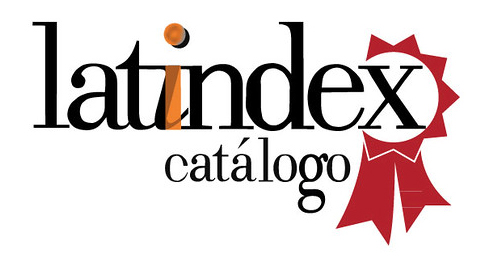Uso de modelos de cálculo didácticos en la estructura axilsimétrica del cenotafio de Newton = Use of didactic calculation models in the axilsimetric structure of Newton's cenotaph
DOI:
https://doi.org/10.20868/abe.2017.3.3670Keywords:
Herramientas docentes, Maple, axilsimetría, boullée, utopía, arquitectura, Teaching tools, maple, axilsimmetry, utopia, architectureAbstract
Resumen
El trabajo desarrollado consiste en la formalización y comprobación ante hipótesis de carga de una bóveda axilsimétrica no construida. Esta bóveda es un proyecto utópico del arquitecto Louis Etienne Boullée, arquitecto francés con un volumen de obra muy significativo de carácter casi "surrealista". La obra de este autor alcanza normalmente unas proporciones titánicas y carentes de ornamento, basando sus formas principalmente en volúmenes geométricos sencillos. El proyecto que nos atañe será el cenotafio de Isaac Newton, una gigantesca bóveda axil simétrica con un espesor muy reducido en algunos puntos. Con el uso del programa de cálculo Maple, un programa de ánalisis matemático combinado con la tecnología CAD/CAM basada en los dibujos existentes de este proyecto comprobaremos la estabilidad geométrica y estructural de esta bóveda de proporciones titánicas. Con esto mostraremos las posibilidades de aplicación de los programas de cálculo geométrico a los modelos estructurales históricos y teóricos, como una herramienta mucho más visible y didáctica que los cálculos numéricos al uso. La visualización de los esfuerzos que resultan en las diferentes dovelas de la bóveda, conjuntamente con la comprensión y constatación del funcionamiento axil simétrico del modelo será determinante a la hora de comprender el funcionamiento de este sistema estructural y resolverá la duda que nos atañe. ¿Se podría construir el cenotafio de Newton? ¿Es una construcción estable geométrica y materialmente?
Abstract
The work developed in this paper consists in the formalization and verification of the load hypothesis of a non-constructed axilsymmetric vault. This vault is a utopian project by the architect Louis Etienne Boullée, French architect with a very significant volume of work of "surrealist" character. The works topic of this author usually resembles itself in buildings of titanic proportions and devoid of ornament, that base their forms mainly on simple geometric volumes. The project that concerns us will be the Isaac Newton cenotaph, a giant axial symmetric vault with a very small thickness in some points. With the use of the Maple calculation program, a mathematical analysis program combined with CAD / CAM technology based on the existing drawings of this project, we will check the geometric and structural stability of this vault. With this we will show the possibilities of application of the geometric calculation programs to historical and theoretical structural models, as a much more visible and didactic tool than the usual numerical calculations. The visualization of the efforts that result in the different keystones of the vault, together with the understanding and verification of the axial symmetrical functioning of the model, will be decisive when understanding the functioning of this structural system and will resolve the main doubt that concerns us. Could Newton's cenotaph be built? Is it geometrically and materially speaking a stable construction?
Downloads
References
Boullée& visionary architecture ed. Helen Rosenau, Pub. Harmony Books, Nueva York, 1976
HEYMAN J. “Teoría, Historia y Restauración de Estructuras de Fábrica: Colección de Ensayos”. Madrid, Ministerio de Obras Públicas, Transportes y Medio Ambiente, Centro de Publicaciones, 1995.
Huerta, Santiago (1996) La teoría del arco de fábrica: desarrollo histórico. Revista O.P. Ingeniería e historia, Ed: Colegio de ingenieros de caminos, canales y puertos, Barcelona.
Boullée, Etienne-Louis (1728 - 1799)", the Hutchinson Encyclopedia, Helicon (2001).
Boullée, Etienne-Louis (1728 - 1799)", Crystal Reference Encyclopedia (2001).
HUERTA S. “Arcos, bóvedas y cúpulas: geometría y equilibrio en el cálculo tradicional de estructuras de fábrica”. Madrid, Instituto Juan de Herrera, 2004.
UNGEWITTER, G. “Lehrbuch der Gotischen Konstruktionen”. Leipzig, 1901
HEYMAN J. “El Esqueleto de Piedra. Mecánica de la arquitectura de fábrica”. Madrid, Instituto Juan de Herrera, 1999.
Downloads
Published
Issue
Section
License
ABE (Advances in Building Education / Innovación Educativa en Edificación) does not charge authors for processing or publishing an article and provides immediate Open Access to its content. All content is available free of charge to the user or his institution. Users are permitted to read, download, copy, distribute, print, search or link to the full text of articles, or use them for any other lawful purpose, without prior permission from the publisher or author. This is in accordance with the BOAI definition of open access.
- Authors retain the copyright and grant to the journal the right to a Creative Commons attribution / Non-Commercial / Non-Derivative 4.0 International (CC BY NC ND) License that allows others to share the work with an acknowledgement of authorship and non-commercial use.
- Authors may separately establish additional agreements for the non-exclusive distribution of the version of the work published in the journal (for example, placing it in an institutional repository or publishing it in a book).
Unless otherwise indicated, all contents of the electronic edition are distributed under a Creative Commons license.














